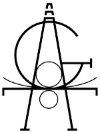America Is Really Hard To See borrows the iconic figure of ‘Boss Tweed’—a notoriously corrupt NYC political boss and real estate titan—from an 1871 political cartoon titled ‘THE BRAINS’ by Tomas Nast. Nast was relentless in his exposure of political corruption and capitalist greed, and was instrumental in Tweed’s eventual demise. Originally intended for newspaper circulation, Swainston reinterprets this image as a large-scale multi-layered woodblock. Contemporary figures in power-suits flank Nast’s historic caricature of greed. Backlighting produces shifting moiré patterns as the viewer moves past the image. Swainston calls this ‘the unstable image’ and posits this effect as analogous to power’s disappearing act in contemporary society. In an accompanying room-sized stop-animation video, the artist attempts to ‘confront the boss’ but his rebellion is short lived.
Artist Bio
Born and raised in rural Pennsylvania and based in New York, Rob Swainston is an Assistant Professor of Art+Design in Printmaking at Purchase College and Master Printer for collaborative printshop Prints of Darkness. His art intersects printmaking, painting, installation, and sculpture. Rob received a BA in Social Science from Hampshire College and an MFA in Visual Arts from Columbia University. Rob claims: “All images are historically negotiated assemblages between humans, machines, materials, and social structures. In a society where social knowledge and power have become pure image, the print technologies historically central to this transformation can act as double-agent. Artists working in print media can be chameleons moving between image-makers and image-reproducers.” Rob has been awarded numerous awards and residencies including Skowhegan, Marie Walsh Sharpe, and the Fine Arts Work Center. Solo and group exhibitions include Marginal Utility, David Krut Projects, Bravin Lee Programs, Socrates Sculpture Park, Smack Mellon, Munson Williams Proctor Museum of Art, Provincetown Art Association and Museum, IPCNY, Canada Gallery, Queens Museum, and the Bronx Museum.
Rob Swainston
America Is Really Hard To See
Installation, woodblock print on poly-knit fabric with light, 87” x 120” x 8” wide and Stop-animation video, 10 min 38 sec long with Eve Sussman, camera assistance and Russ Spitovsky, illustration assistance
Spring / Break Art Fair NYC 2020
Guttenberg Arts Special Project Space



